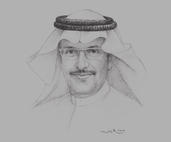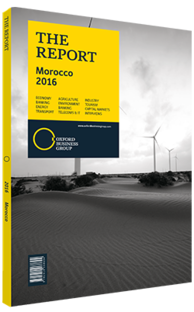Mohamad Abunayyan, Chairman, ACWA Power: Interview

Interview: Mohamad Abunayyan
How do you see technologies related to solar energy improving in the near future?
MOHAMAD ABUNAYYAN: Energy storage can be improved through innovation and development of the relevant technologies. With regard to concentrated solar power, the use of molten salt has been enhanced through the evolution of solar tower technology. Storage capacities are constantly improving as well. Today, we operate the world’s biggest storage facility in South Africa, which has a nine-hour capacity. Tower technology is also being developed to make 12-hour storage capacities a reality. Morocco’s Noor II solar power station is expected to have a seven-hour storage capacity, but this will be surpassed by the eight-hour capacity of Noor III. We are very optimistic because things are improving rapidly. In terms of the progress being made with photovoltaic technology, the automotive industry is driving improvements in batteries.
Given the fall in international oil prices, how can solar energy remain competitive?
ABUNAYYAN: There is a silver lining to low oil prices, as they encourage us to invest in renewable development. For example, when hydrocarbons prices dropped in mid-2014, research and development in solar and wind energy increased accordingly. Oil prices are likely to remain at $50-60 per barrel, based on supply and demand forecasts. This will not impact the development of renewable energies because conventional and green energies are actually complementary. We need a mix of oil and renewables, as oil is not sustainable in the long term.
For solar and wind power there is room for further development of a local industrial base and a need for decentralised production. This is what we witnessed in Morocco, where 30% of the total value of Noor I was created in-country. Noor II and III will reach 35%, while for our project in South Africa the figure was 40%. In contrast, it is more difficult to pursue localised production with conventional energy, due to the need for huge technology transfers, economies of scale and large capacities. Even in nations like Saudi Arabia, we are witnessing a shift to a more sustainable energy mix, and despite low oil prices, renewable energy projects with a combined output of 9.5 GW per day are in the pipeline for development there between 2016 and 2023.
What were the biggest challenges encountered during the development of the Ouarzazate (Noor I) solar power station?
ABUNAYYAN: Under the leadership of King Mohammed VI, we witnessed a successful implementation phase, despite the major challenges encountered at the beginning of the project. All the difficulties we faced in terms of geography, logistics and know-how were very enriching. With the help of the government and the Moroccan Agency for Solar Energy, we created an integrated task force that was able to achieve the project’s completion. The timeline for the project was very tight, and we faced some challenges in terms of infrastructure and local human resources. Nevertheless, we understood that Ouarzazate would go beyond simply producing energy in a region with high levels of sunshine.
Creating jobs and assisting with the development of the region were the main goals of the project. We also ensured successful completion of construction, the development of local resources and the transfer of technology. We delivered Noor I on schedule with the best safety record in the history of Moroccan construction. The operation of the plant is now conducted by a staff that is 100% Moroccan. In five years, we expect to have only domestic employees operating the plant, starting a new phase for ACWA Power’s development in Africa. We want Morocco to become a platform for the region as a whole.
You have reached the limit of premium articles you can view for free.
Choose from the options below to purchase print or digital editions of our Reports. You can also purchase a website subscription giving you unlimited access to all of our Reports online for 12 months.
If you have already purchased this Report or have a website subscription, please login to continue.

